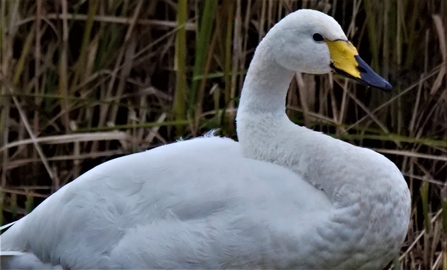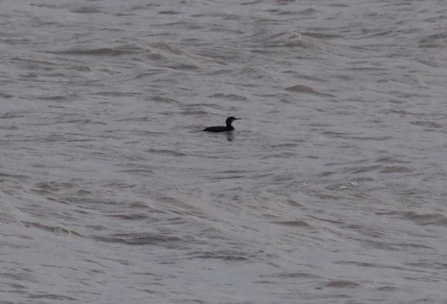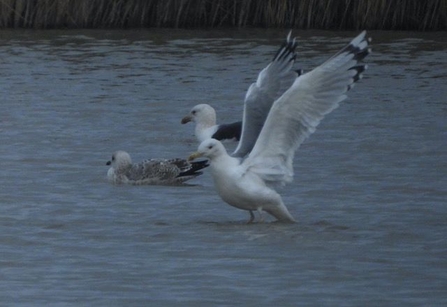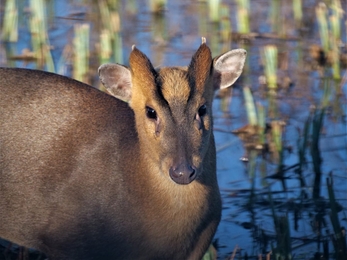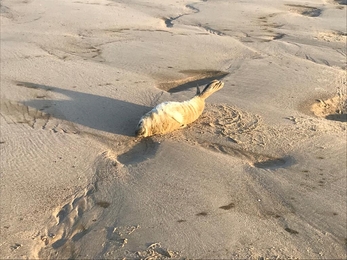A few hirundines were recorded at the start of the month with 2 swallow on 2nd and a house martin on 7th. These birds were believed to be juveniles so probably a late brood leaving the nest and lingering due to the warm weather earlier in the month.
Autumn 2021 is proving to be excellent for bearded tit with at least 20+ birds frequenting the area in November, including at least 16 at Huttoft Pit, and a further four birds at Wolla Bank. Though this number is sure to be much higher with lots of reedbed areas under-recorded.
The usual wintering swan herd returned properly on 12th with 40 whooper swan and 2 mute swans noted. Whooper swan gradually numbers increased during the month and peaked at 94 on 24th, two Bewick’s swan were also recorded on this date alongside 11 mute swan. Whooper swans tend to remain in the area from October through to march; breeding in Iceland and Greenland. Bewick’s swan breeds much further east in Siberia and arctic Russia and are rare visitors to the Lincolnshire Coastal Country Park with just a handful of sightings a year; these tend to be of birds passing through to wintering grounds on the Ouse Washes.


